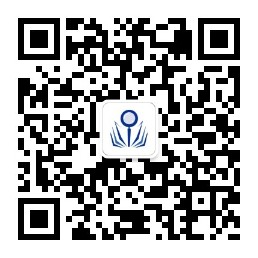Topology[1] and Router Configurations 拓扑及路由配置 Routers provide physical connectivity between
Topology[1]and Router Configurations
拓扑及路由配置
Routers provide physical connectivity between networks by virtue of their physical attachments to either local-area networks (LANs), such as Token Ring or Ethernet[2], or wide-area networks (WANs), such as Frame Relay or ISDN.
A router can be used to connect only LANs together, only WANs together, or any other combination. The term physical connection should not be taken too literally. Many networks make use of Microwave links for WAN connectivity. This means that no actual physical connection exists between two connected routers communicating over cellular modems[3].
The Router Interface
A router's attachment to a LAN or a WAN is usually referred to as an interface but may also be referred to as a port. For example, a connection to a Token Ring LAN is with a Token Ring interface.
When discussing a router's connections to a network, it is common to say the following: "We connect the Finance department's Token Ring network to the corporate backbone via Bbone-1 first Token Ring interface. " Bbone-1, in this case, is the logical name of a router in a corporate network. Routers are typically assigned names that provide some information about their locations and functions.
When a router is routing IP, each LAN or WAN it is connected to must have a unique IP network or subnetwork assigned to it. In the case of some serial links, it must borrow an address from another interface. This borrowing, called IP unnumbered[4]is covered later. Each interface on the router must have a valid IP host address for the subnet it is attached to. In most cases, a router can have only one connection to any single subnet. One exception to this rule is that Cisco routers allow up to four serial links to share the same subnet, provided that they all terminate at the same destination router.
Network Layer Addresses
In addition to providing physical connectivity between networks, routers also possess the capability to move information across multiple networks by forwarding datagrams based on their network layer addresses. In this case, the network layer is the third layer in the OSI[5]seven-layer model. For IP, the layer three addresses are 32-bit binary numbers.
Datagrams
The term datagram is commonly used to describe any information generated by a higher-layer application or protocol that is being handled at the network layer in the OSI model. One example of a datagram is a Telnet login request from a host to a remote UNIX server.
The users indicate via their Telnet application—Telnet being an application layer function—that they want to log into a server. The Telnet application passes this request to the next lower layer in the protocol stack—TCP, in this case—and waits for a response from the remote system.
The TCP layer adds its own information to what it received from the Telnet application and hands this combined message to the IP layer—the network layer—of the protocol stack. TCP will hold onto the request it received from Telnet in case the first attempt to contact the remote host fails. The message the IP layer receives from Telnet and TCP is called the datagram. The term packet is often used interchangeably with datagram.
If the destination host had not received the original IP datagram in the previous example, TCP would have made at least one more attempt to initiate the login. TCP would have handed another copy of its information to the IP layer, and IP would have attempted to deliver the datagram again.
When routers forward datagrams based on their level three addresses, all layer two information that arrived with the packet is discarded. The router recreates the required layer two information before forwarding the datagram to the next routers which allows routers to connect networks with different layer two frame and addressing formats. Sometimes certain routers are deployed only for the purpose of connecting dissimilar LAN or WAN types because it is usually impossible to bridge routable protocols (protocols with layer three addresses) in these situations.
MAC Addresses
Some routers are also able to move information across networks by forwarding frames based on their layer two addresses, which are more commonly known as MAC (Medium Access Control)[6]addresses.
This activity is really bridging, not routing. Bridges forward frames based on their layer two addresses and leave the layer two packet and addressing formats unchanged. It is usually impossible for a host on an Ethernet network to exchange information with a host on a Token Ring network when one or more routers exists between them. The exception is when a bridge or a router acting as a bridge is set up to translate layer two addresses and frame formats between different types of LANs or WANs.
Several years ago, an attempt was made to call devices that performed both routing and bridging functions brouters. This never really took off. However, it is important to distinguish between a protocol being bridged or routed when configuring routers, and a protocol being bridged or routed when trouble-shooting network problems. Some protocols do not have layer three addresses and thus must be bridged using their layer two addresses. Routable protocols, such as IP and Novell's IPX, can be either bridged or routed.
IP Address Formats
IP addresses are typically written in a format known as dotted decimal to avoid working with binary numbers (for example, writing 201. 124.76. 210 instead of 11001001. 01111100. 01001100. 11010010). Each of the four sections of the address represents one byte or eight bits.
IP addresses are broken into two sections: a network section and a host section. Routers make decisions on forwarding datagrams based on the network portion of the IP address. The amount of an IP address allocated to the network portion is determined by the class of IP address in use and the subnet mask applied to it.
Assume, for example, that the address shown previously 201. 124. 76. 210—has a subnet mask of 255. 255. 255. 0. The subnet mask associated with this address (255. 255. 255. 0) tells the router where the network portion stops and the host portion begins.
The router would only have to know where addresses with the prefix (network portion) 201. 124.76.0 exist and forward the datagram accordingly. It is not necessary for the router to keep track of the entire address.
Network prefixes are stored in a router's memory in what is usually referred to as a routing table. The information a routing table contains can be learned by listening to information provided by other routers via a dynamic routing protocol or by information coded directly into it. Don't worry if you don't understand this completely yet. It should become clearer as you move on.
Network Reference Models
Figure 1-1 shows a representation of the OSI (Open System Interconnection) seven- layer model.
![Topology[1] and Router Configurations 拓扑及路由配置 Ro](https://img2.soutiyun.com/ask/4962001-4965000/331389f70fc60f4ef461e0504ee5218f.jpg)
A representation of the OSI seven-layer model. All layers are independent of on another.
It is important to note that, with few exceptions, most networks today are not based on the OSI seven-layer model. Instead, they are based on the IEEE LAN[7]reference model or the Ethernet Ⅱ standard.
Notes
[1] topology: 布局技术,拓扑学。
[2] Token Ring or Ethernet:令牌环(计算机网络的一种组成方案,是有IBM公司首先提出的)或“以太”网。
[3] cellular modems: 细胞式(蜂窝式)调制解调器。
[4] IP unnumbered:未编号的IP。
[5] OSI(Open System Interconnection):开放式系统互连(模型),一种通信协议的7层抽象的参考模型,其中每一层执行某一特定任务。该模型的目的是使各种硬件在相同的层次上互相通信。这7层是:物理层、数据链路层、网络层、传输层、会话层、表示层和应用层。
[6] MAC (Medium Access Control):媒体存取控制帧。
[7] IEEE(lnstitute of Electric and Electronic Engineers):电气电子工程师学会。
Choose the best answer:
 如搜索结果不匹配,请 联系老师 获取答案
如搜索结果不匹配,请 联系老师 获取答案


![Topology[1] and Router Configurations 拓扑及路由配置 Ro](https://img2.soutiyun.com/ask/4962001-4965000/331389f70fc60f4ef461e0504ee5218f.jpg)



















